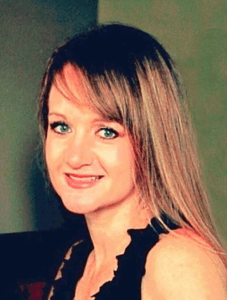 WHAT DOES REMISSION LOOK LIKE?
WHAT DOES REMISSION LOOK LIKE?
Written by Dr. Katinka van der Merwe for the RSDSA blog.
Through the years of working with CRPS patients, I have often encountered what I refer to as “the myth of remission.” What does this mean, and why do I refer to it as a “myth?”
When patients who suffer from CRPS dream of remission, they picture themselves back in the life that they used to have before CRPS. They picture themselves “cured,” and as having no pain ever. The truth is more complicated. You have to remember that CRPS is not like lightning that strikes unlucky, healthy people. CRPS affects those who, for whatever reason, have unhealthy nervous systems, and/or unlucky genetics. I call this “The perfect storm.” While it is possible to compensate for your genetics, this does mean that you will have to live more carefully than most. However, it does not mean that you have to wrap yourself in figurative bubble wrap, living in fear of every bump and fall. I have had many patients, after completing their treatment, suffer injuries or undergo surgeries, with no ill effects.
CRPS attacks weak spots in the nervous system if it is unable to self-limit the inflammatory cycle. A body that is functioning correctly can switch off inflammation when it is no longer needed. A healthy body can move out of a “fight or flight” response when it is no longer appropriate. During the “fight or flight” response, a chemical released by the adrenal glands called norepinephrine causes the body to temporarily “borrow” blood supply from, among other, the skin, the GI tract, and small nerves. When the perceived threat or stress has passed, healthy bodies can reverse this. However, the bodies of patients who suffer from CRPS have difficulty to reverse this process.
Difficult does not mean impossible, however. In my experience, the bodies of CRPS patients can be supported and guided to once again obtain balance between the two autonomic states called the parasympathetic (“rest and digest”) and sympathetic (“fight or flight”) states. In order to do this, the Central Nervous System must be supported to heal, as discussed in my earlier blog. However, this blog is not about my treatment, or any successful treatment, but rather, on what comes after. What can a patient expect after beating the monster that is CRPS?
The “myth of remission” generally consists of the belief that once “cured,” patients will have no pain, ever. This may cause some alarm in you when reading this. Does this mean that you shouldn’t expect the pain to disappear? That you can’t dream of a normal life? That is not at all what I mean. Rather than thinking in absolutes, or black and white, you must envision life after CRPS as consisting of more of a gray scale. I prefer to see CRPS as “managed” rather than cured. The patient must understand that, while their pain levels may be drastically decreased and even gone altogether, they still inhabit a body in which the perfect storm once came together to ultimately result in CRPS. You are the captain of this body, the steward. You make decisions going forward that will help to support a body that was once so stressed, that it allowed CRPS to develop. Not all patients will become a 100% pain-free. However, the pain should be much more manageable, without the use of daily narcotics. Remission essentially is a process by which you regain trust in your own body’s ability to heal from within. Ideally, it involves a basic understanding of why/how you got sick in the first place, so that you feel more in control of your future health, rather than a sitting duck.
There is a big difference between living diligently and living in fear. Living in fear means that anything can “get” you, at any time, like a predator stalking you in the bushes. You are constantly aware that it is always close by, ready to pounce. It means you are a victim with no control. Living diligently means that you are respectful of your health, as you have seen the damage that ill health can wreck on your life, your psyche, and your loved ones. It means that you make daily choices that are most likely to result in health. It means that you are in control. Special care must be taken during times of great stress, such as the death of a loved one, illnesses, or injuries. Think of your body as a building with a roof that has been repaired. During a monsoon, you need to be extra diligent, or your roof may leak and ultimately collapse. Do not ignore any “leaks” of energy.
I think it’s also necessary to talk about the actual process of healing. In my experience, when patients fantasize about what healing will look like, it generally resembles a smooth road without many obstacles in which everyone lives happily ever after. In these fantasies of Nirvana, there are no drawbacks, healing happens fast (hence the word “cure”), and something brings about this healing from the outside in (a magical procedure, surgery, or drug). The reality is much different. For this reason, I thought it would be valuable to share the characteristics of healing that I have observed over time.
1. Healing is hard, hard work.
While healing can be extremely rewarding, exciting, and fun, it also involves incredibly hard work. Besides the initial work when researching treatments, as well as the practical problems you will have to sort out (financing, lodging, etc.), the actual process of healing can be very challenging. Essentially, you are signing up for a roller coaster ride of ups and downs, as well as rapid changes that all will require that you have to adapt. Your medications will have to be adjusted by a professional and you may go through withdrawals and detoxification reactions. In addition, you will have to learn what your new boundaries are. While you may soon feel like a butterfly emerging out of a cocoon, ready to spread your wings, your nervous system more resembles a newborn fawn, vulnerable and shaky at first as it acclimates. For this reason, I caution patients during the early stages to do only 25% of what they feel capable of doing. It also helps to enter the process of healing with the mindset that you are a willing, active participant, ready to bring whatever it takes to the table.
2. The body heals on a priority basis.
The body has a finite amount of energy available to it at all times. As the law of energy conservation states, energy cannot be created nor be destroyed, it can only be transferred. Why this is so important? Let’s pretend this energy is equivalent to a $100 bill. Each function and metabolic process in your body requires a predetermined amount of energy. For example, the simple act of walking may require $5. However, if you have an injury to your right foot, such as a twisted ankle, walking may now require $15 instead of $5. The additional $10 cannot be simply created, it has to be transferred from other areas. This may leave every other body part and function now lacking the energy to be performed optimally. The injured part is essentially ‘vampiring’ energy away from other parts of the body. The brain will not allow this “energy leak” to go on fruitlessly for too long. If an injury does not heal, after a while, the brain will start to ignore it.
Using the same reasoning, the nervous system will always focus most of its energy on the injury that threatens your survival the most. While CRPS may be your most painful injury, it may not be your most life threatening injury. If you have heart problems, for example, these problems may be silent but ultimately prove to be more deathly. Your body, in its infinite wisdom, knows where to focus its healing energy. Conversely, as the main sight affected by CRPS begins to heal, you may feel pain somewhere new as your body is cycling through old injuries as it now has the energy freed up which allows it to shift focus. This means that old injuries (such as disc problems) may suddenly hurt more.
In addition, my patients have frequently reported that as the limb/area affected by CRPS gets better, they will now feel the pain of CRPS elsewhere in the body for brief periods of time. This does not mean that the CRPS is spreading. It means that CRPS was already affecting other parts of your body, you were just not aware of it. Pain is used by the nervous system as a fire alarm of sort. It alerts the brain to areas that require healing. You cannot get better unless your nervous system is made aware of every malfunctioning area or body part.
3. You will lose your “pain callous.”
Healing means ups and downs rather than smooth sailing. Some days you may feel incredibly good, and other days may plunge you back into the bowels of hell. People who suffer from daily chronic intense pain will develop what I refer to as a “pain callous.” This is a protective mechanism used by the brain that prevents a massive daily leak of energy as discussed above. You cannot survive for long if you are hemorrhaging precious energy. For this reason, your brain is forced to start ignoring pain to a large extent. The minute your brain unleashes your inner healing, your body will return to a state where it experiences pain the same way normal people do. For this reason, you will now experience pain differently. This means that when the pain does come back, even though it won’t be worse, you will perceive it as more intense.
Coupled with this phenomenon is the fact that no matter how many times I tell my patients that ups and downs are to be expected, and that the pain won’t disappear for good after one treatment (except for a very lucky few), a part of them will still be crushed by disappointment when they have a bad day. It is one thing to hurt every day and have an uneasy acceptance of this daily pain, but to get excited, and have a glimpse of heavenly normalcy and then to hurt again, is petrifying. The first thought that will pop in your mind is: “Oh no, is the pain back?! Was it too good to be true?” As time goes by and your pain goes down again, and your new low pain levels become more stable, you will learn to trust your body’s ability to rebound.
4. Change is scary!
When you picture being healthy again, I bet you never expect that feeling better may be petrifying at times. That makes no sense, right? I have observed, however, that healing is, in fact, very scary. It took me a long time to understand this phenomenon. As humans, we are naturally scared of change. Change requires our nervous system to adapt to its new circumstances and it requires our lives to change as well. When you suffer from a chronic condition, you start to view yourself differently. Others start to view you differently, too. You getting better will require those around you to get used to a new you, too.
Your daily responsibilities at home change in some very practical ways. You may no longer help around the house, cook, or do your own laundry. Your relationships change also. In addition, if you have suffered from CRPS for a year or longer, you typically have been forced to change your circumstances in order to adapt. You may no longer be working. You may have given up on hobbies and traveling. You may have lost friendships and other relationships. You and your partner may have changed the way you relate to each other, as you became the dependent one, and your partner the caregiver. Healing may require practical changes in your relationships. If you share children with a partner, they may have gotten used to being a single parent essentially, and making all decisions on their own. They may also be used to being in charge of most of the decision making when it comes to other things, such as finances. While this may be a burden, it may also be hard to give back some of the power they have grown accustomed to. This does not make them controlling, simply human.
Getting better may leave you feeling a little bit like Rip Van Winkle, waking up to a changed world. You may have to start all over, in a sense. If you have ever observed a butterfly breaking out of its cocoon, you will know that this change has to happen very slowly. Luckily, most people will adapt after a few months and embrace life with a gratitude that can only come from literally having been to hell and back. After you return to normal life, you will always appreciate it in ways normal people will never understand. This will be a gift that you get to keep, one of the few positive things that CRPS will bring to your life.
Dr. Katinka van der Merwe is a chiropractor who practices in Fayetteville, Arkansas. She treats the Central Nervous System, (specifically the Autonomic Nervous System) with the “Three Punch System”, recently revised to the “Four Punch System.” Her work is detailed on this site in an earlier blog. She has treated CRPS patients from all over the world in her clinic, and is the author of “Putting Out the Fire: New Hope for RSD/CRPS Patients,” expected to be released on Amazon in November. Her clinic number is 479-304-8202.
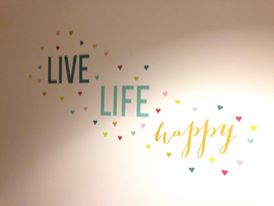 All people that have been diagnosed with CRPS/RSD want in this lifetime is a cure. That’s why so many of us focus on awareness, awareness events, fundraising, and even on keeping up with the latest research. There is nothing more we want than to be the “old” us- the ones that can hop, skip, and play with our dogs, children, grandchildren, nieces/nephews, and so on, without being in excruciating pain and facing all of the consequences that come with it (if we can even get our bodies to move in those ways). Please note everything in this article is my own opinion.
All people that have been diagnosed with CRPS/RSD want in this lifetime is a cure. That’s why so many of us focus on awareness, awareness events, fundraising, and even on keeping up with the latest research. There is nothing more we want than to be the “old” us- the ones that can hop, skip, and play with our dogs, children, grandchildren, nieces/nephews, and so on, without being in excruciating pain and facing all of the consequences that come with it (if we can even get our bodies to move in those ways). Please note everything in this article is my own opinion.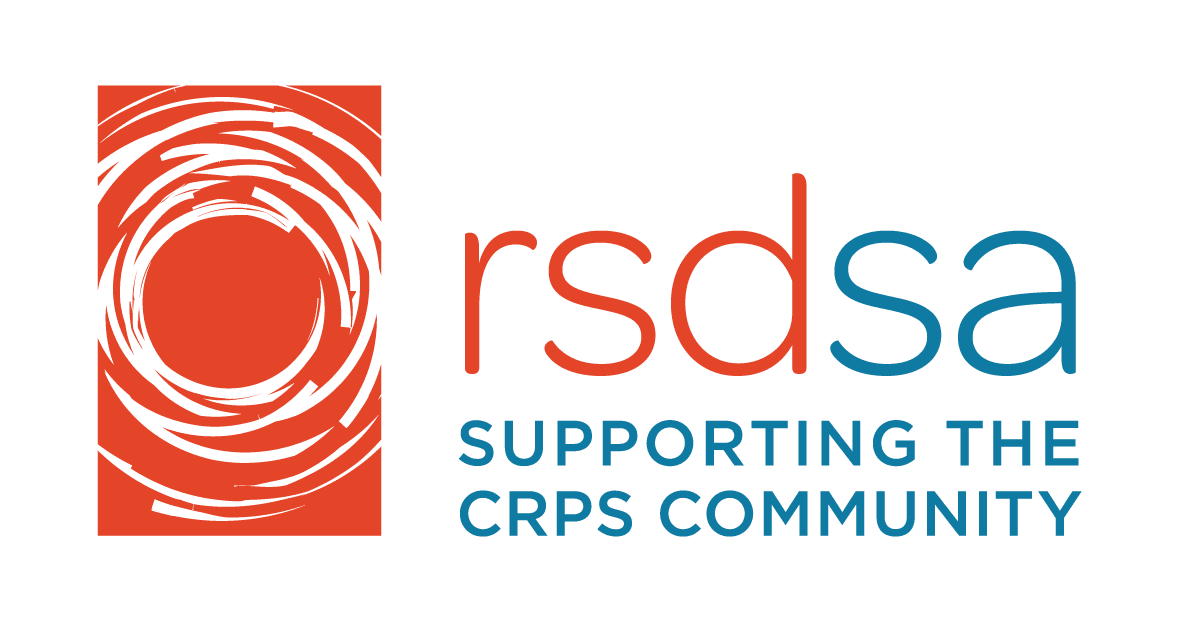
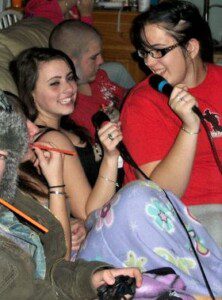
 surrounding town. Her mom, the notorious S-U-E, brought her to my fundraiser and we got to connect. It blew my mind that someone that was close to my age (and lived near me) was going through everything I was going through. She went off to college while I was still in high school, so communication became limited to Facebook. But, I always knew if I needed to talk, she’d be there. Now that we’re both older, we get to chat a little more frequently. Our schedules don’t always align, but we cheer each other on and try to check in on each other. We’ve been through some incredible moments and some of the lowest moments of life together. We have inside jokes that no one would understand. We’re able to discuss anything and everything. Topics that could make other people uncomfortable we openly chat about, since we’re both still constantly learning about living with chronic pain syndromes among other things. Her friendship is not something I take for granted. She is truly a lifelong friend.
surrounding town. Her mom, the notorious S-U-E, brought her to my fundraiser and we got to connect. It blew my mind that someone that was close to my age (and lived near me) was going through everything I was going through. She went off to college while I was still in high school, so communication became limited to Facebook. But, I always knew if I needed to talk, she’d be there. Now that we’re both older, we get to chat a little more frequently. Our schedules don’t always align, but we cheer each other on and try to check in on each other. We’ve been through some incredible moments and some of the lowest moments of life together. We have inside jokes that no one would understand. We’re able to discuss anything and everything. Topics that could make other people uncomfortable we openly chat about, since we’re both still constantly learning about living with chronic pain syndromes among other things. Her friendship is not something I take for granted. She is truly a lifelong friend. I have some other friends that I was able to virtually meet and then meet in person. Kerry, Ginger, Rachel, and Taylor are just a few. I’ll never forget meeting Kerry. We had always talked on Twitter, but
I have some other friends that I was able to virtually meet and then meet in person. Kerry, Ginger, Rachel, and Taylor are just a few. I’ll never forget meeting Kerry. We had always talked on Twitter, but  then I heard her check in to the Achilles walk about 3 or 4 years ago. I turned around and felt like I was meeting a celebrity. I was so excited to finally meet this friend that I had been talking to online for so long. I met Ginger in person a year later at Achilles and instantly felt like I had known her forever. The three of us even united to do a live stream event, even though I FaceTimed into their Periscope session. We frequently discussed the three of us getting together, but schedules don’t always align. Rachel and I met through our CRPS/RSD Twitter accounts. We then became pen pals. We also always talked about meeting. I remember the day that I received a letter from Rachel with some very serious news about her health. I panicked for her and found her number so I could text her and try to be there for her in a way that was a little quicker than snail mail. She told me what she was about to endure, and we texted back and forth for the rest of the evening. I remember the first letter I received after her procedure. It had gone very well and she wasn’t experiencing the pain that she had been before. I was so happy for her. We also met at for the first time in person at an Achilles Walk. We didn’t get to chat much, but it was so nice to see her in person. She recently got married and I felt like I was living through her, I was so incredibly happy. And then there is Taylor. Taylor and I had been texting buddies because of things related to my work. I hadn’t known she was close to my age initially. Then, we found out we were going to meet and we were so excited. The day I met her, I felt like I met a long-lost sister. We ran (well, we hobbled) toward each other and gave the biggest bear hugs that we could tolerate. We talked, and talked, and talked some more. It was an instant connection. We text each other now when we can, since we live on opposite sides of the country, but I don’t doubt for a minute that the next time we see each other, it’ll be a lively reunion. Not only was she an instant friend, but instant family.
then I heard her check in to the Achilles walk about 3 or 4 years ago. I turned around and felt like I was meeting a celebrity. I was so excited to finally meet this friend that I had been talking to online for so long. I met Ginger in person a year later at Achilles and instantly felt like I had known her forever. The three of us even united to do a live stream event, even though I FaceTimed into their Periscope session. We frequently discussed the three of us getting together, but schedules don’t always align. Rachel and I met through our CRPS/RSD Twitter accounts. We then became pen pals. We also always talked about meeting. I remember the day that I received a letter from Rachel with some very serious news about her health. I panicked for her and found her number so I could text her and try to be there for her in a way that was a little quicker than snail mail. She told me what she was about to endure, and we texted back and forth for the rest of the evening. I remember the first letter I received after her procedure. It had gone very well and she wasn’t experiencing the pain that she had been before. I was so happy for her. We also met at for the first time in person at an Achilles Walk. We didn’t get to chat much, but it was so nice to see her in person. She recently got married and I felt like I was living through her, I was so incredibly happy. And then there is Taylor. Taylor and I had been texting buddies because of things related to my work. I hadn’t known she was close to my age initially. Then, we found out we were going to meet and we were so excited. The day I met her, I felt like I met a long-lost sister. We ran (well, we hobbled) toward each other and gave the biggest bear hugs that we could tolerate. We talked, and talked, and talked some more. It was an instant connection. We text each other now when we can, since we live on opposite sides of the country, but I don’t doubt for a minute that the next time we see each other, it’ll be a lively reunion. Not only was she an instant friend, but instant family.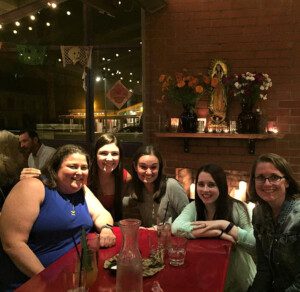
 By Guest Blogger Shannon Leidig
By Guest Blogger Shannon Leidig WHAT DOES REMISSION LOOK LIKE?
WHAT DOES REMISSION LOOK LIKE?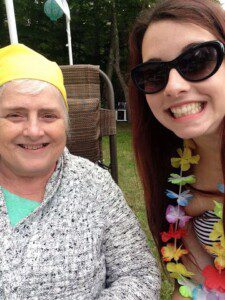 By Samantha Barrett for the RSDSA blog.
By Samantha Barrett for the RSDSA blog.

 By Autumn Strand, Guest Blogger for RSDSA
By Autumn Strand, Guest Blogger for RSDSA